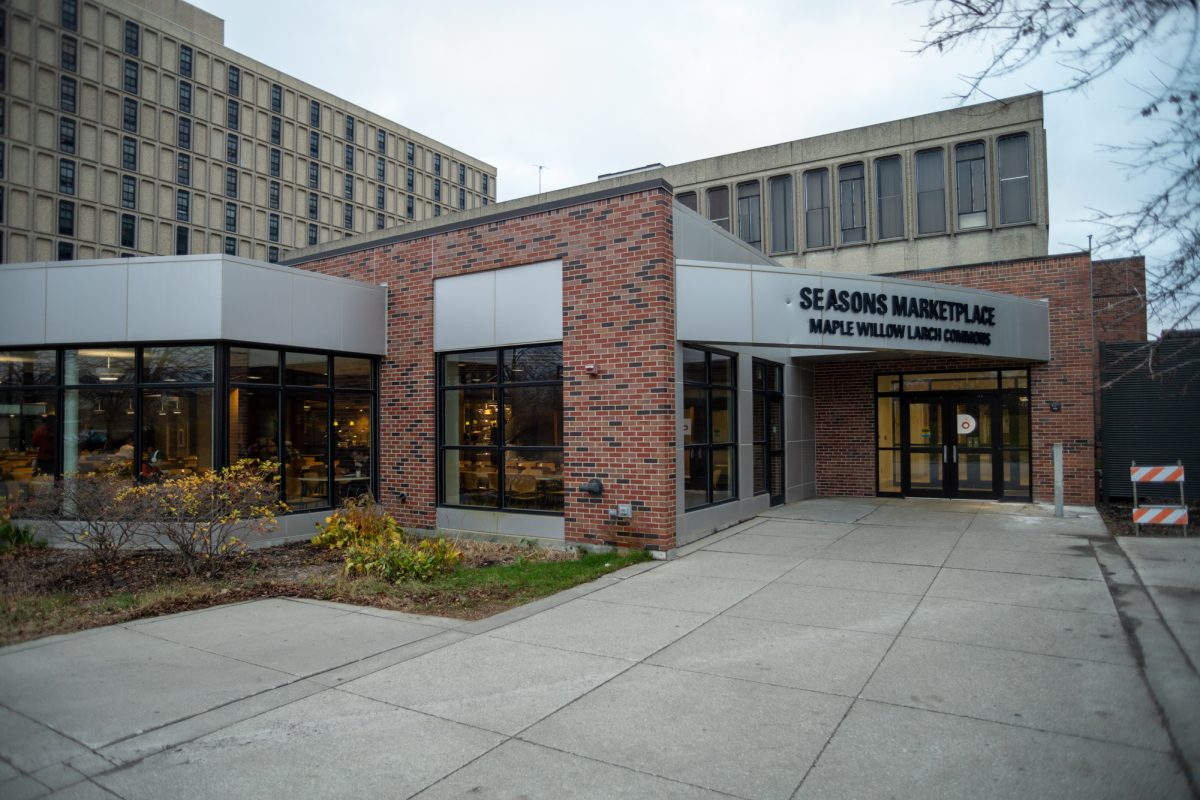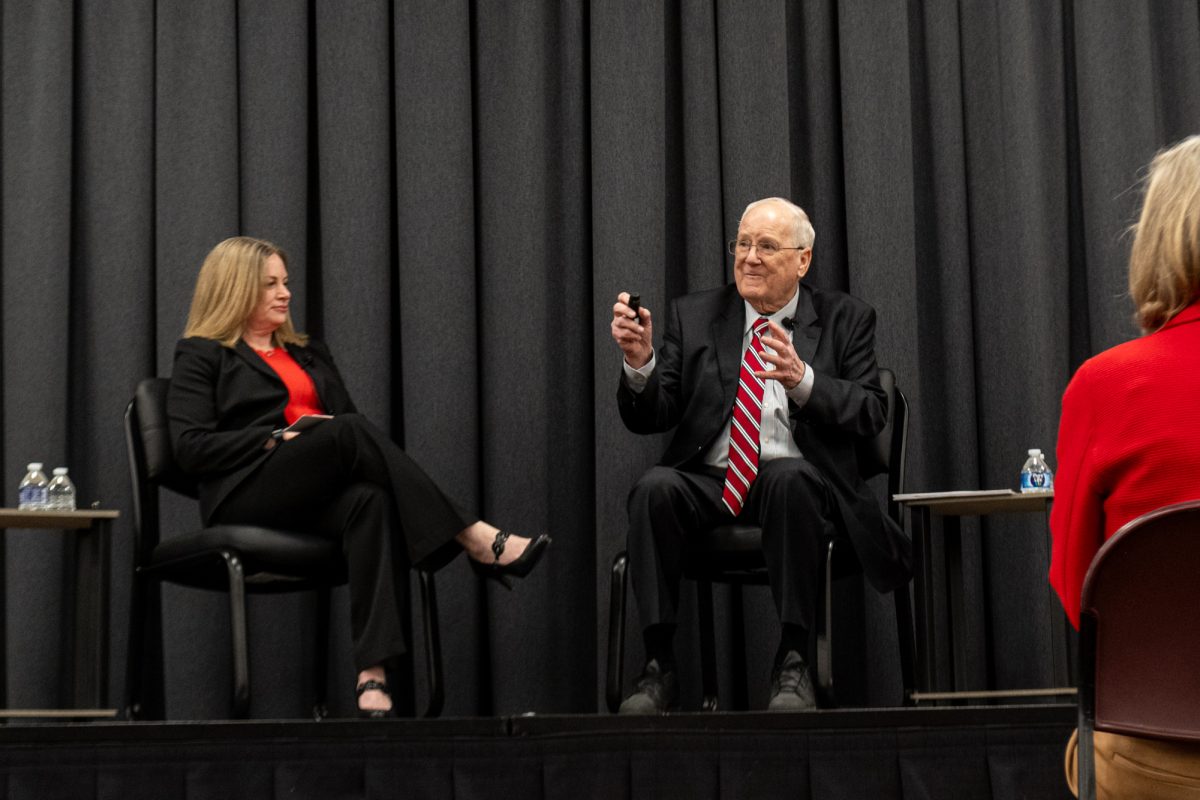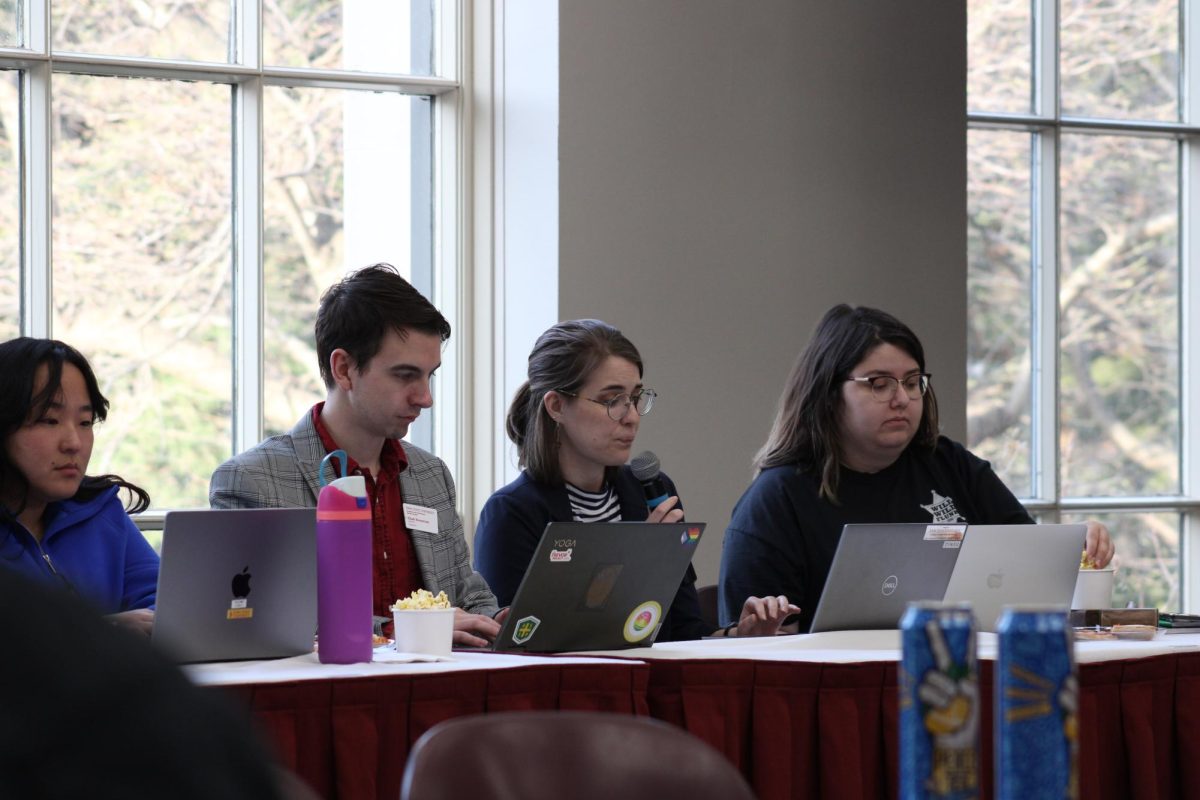New campus art by Morrill Hall illustrates life changes
August 28, 2007
Every new student who steps foot on campus at the beginning of the semester has to go through transitions – whether its navigating their way to class, adjusting to living in a small room, or getting involved in a new club, all students go through certain changes.
That’s what makes Morrill Hall’s “Transitions” sculpture so important to Iowa State.
An internationally known artist, Albert Paley was a relatively easy choice to bring to Iowa State.
“We have followed [Paley’s] career for over 20 years and found that his career was similar to that of Christian Petersen,” said Lynette Pohlman, director and chief curator of University Museums.
Paley, like Petersen, started his career as a jeweler before becoming an artist and sculptor.
Petersen was Iowa State’s first artist-in-residence in 1935 and was later appointed to associate professor in 1955. He is also an honorary member of the Delta Phi Delta and Tau Sigma Delta fraternities.
The sculpture outside Morrill Hall, “Transitions,” describes exactly what students go through Iowa State.
Paley wanted to make a bold statement with the sculpture.
“I chose to do the sculpture for Morrill Hall because I haven’t seen any building like it anywhere else and I wanted to create something that would stand out from the brick design of the building,” Paley said.
Paley moved from New York City to Rochester, New York, in 1969, where he currently lives. He teaches art at the Rochester Art Institute in between his sculpting projects.
Paley made his big mark in the sculpting world with his sculpture “Portal Gates,” which is located in the Smithsonian American Art Museum in Washington D.C.
Pohlman has a different take on “Transitions.”
“Going from freshman year to senior year, passing tests, graduation, and making new friends in the process are all examples of transitions students go through,” Pohlman said. “Individuals come together to form new identities. Education transforms us all.”
The stainless steel sculpture is an abstract piece that connects with the second piece of the sculpture just inside the front door of Morrill Hall.
Tyler Kuster, freshman in art and design, is using the sculpture for a class assignment.
Kuster is sketching a doorway based on work by Paley.
“When I look at the sculpture, I can’t help but notice the sharp edges and smooth curves. This means that he is very good at producing artwork that draws the eyes to different areas,” Kuster said.
“Transitions” is one of many new sculptures planned for the campus in agreement with the university’s public art program.





